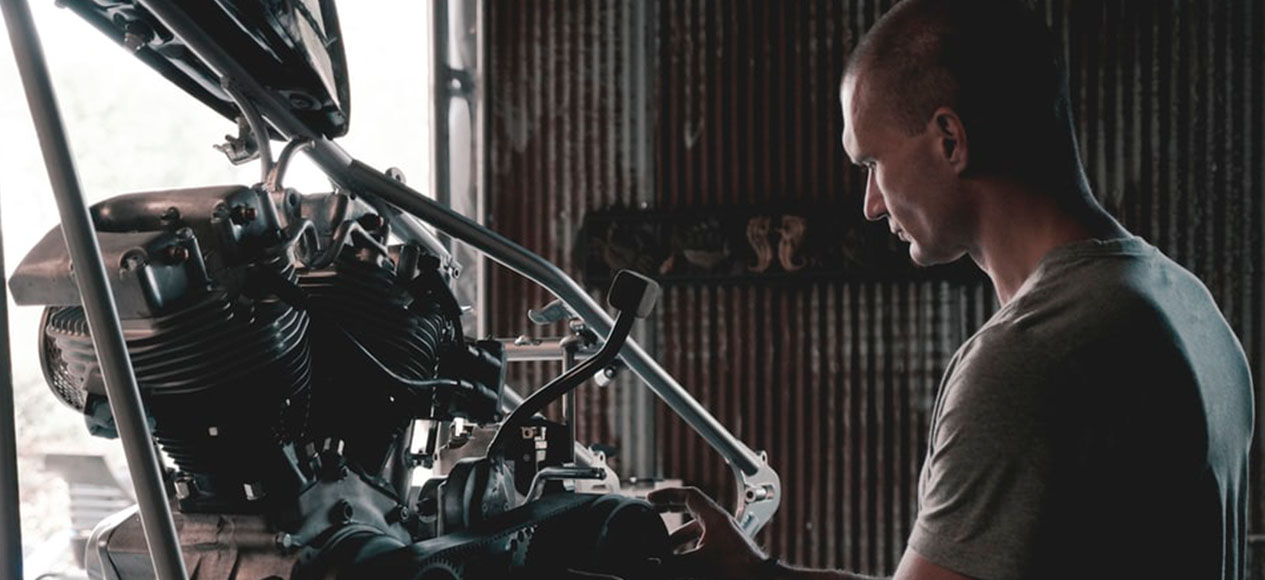Whether you’ve been a biker for a few months or several years, chances are you have at least a working understanding of how your bike works. After all, not only can it be empowering to maintain your bike yourself, knowing what role the most important components play can have a positive impact on both your bank balance and your safety when out on the road.
However, even the most enthusiastic and knowledgeable bikers can dread taking their motorcycle for its MOT. When a professional’s about to look at your pride and joy under the microscope, it can be a stressful experience – even if you’ve done everything you can to keep it safe and roadworthy.
Around 18% of motorbikes fail their MOT each year (compared to 37% of cars), it’s clear to see that bikers tend to place more care in the maintenance of their vehicles. Nevertheless, if you don’t want to wind up being included in the 18%, here are some tips to improve your chances of passing.
What should I check before taking my motorbike for its MOT?
A motorbike MOT consists of 16 different checks to ensure the bike is safe and fit to be ridden on the roads.
The checks will look for damage, excessive wear, and anything that could affect the bike’s safety or impact its ability to meet government standards.
What are the checks?
Lights
This inspection will check that the lights are in good condition; they work properly; they’re secure; and the headlamps are the correct colour.
Steering and suspension
The mechanic carrying out the MOT will want to check the condition of your bike’s steering and suspension. This includes forks, handlebars, head bearings, swinging arm, and shock absorbers.
You can test this prior to the inspection by raising the front wheel off the ground and moving the handlebars from lock to lock. Next, grab the forks at the bottom and push and pull on them. If there’s movement, this could suggest play in the head bearing.
Move to the rear and bounce the bike to ensure the suspension is working as it should.
If you notice an issue in your bike’s steering or suspension, it may be worth getting these problems fixed before taking the bike for its MOT.
Wheels and tyres
Your wheels will be checked to ensure they’re in good condition and secure. The tread depth, valve condition and fitting will also be inspected.
If your motorbike is over 50cc, you’ll need at least 1mm of tread across ¾ of the width of its tread pattern.
Frame
If your frame shows signs of damage, distortion, cracks or corrosion, this is likely to impact your MOT. By checking this before the MOT, you can often get it fixed yourself and save money.
Braking
With your brakes playing such an important part in the safety of yourself and other road users, it’s crucial that they work effectively. They’ll be checked to ensure they’re in good condition and perform exactly as they should.
Exhaust
Your exhaust system will need to be secure, complete and not too noisy.
Fuel system
Your fuel system will be checked to make sure there are no leaks and all components are secure.
Seats
Your vehicle’s seat will be tested to ensure it’s attached securely.
Wheel alignment
The bike’s wheels will be inspected to check they’re correctly aligned.
Sidecars (if applicable)
If your motorbike has a sidecar, this will be inspected to ensure it’s attached securely, aligned, has suitable suspension, and the lights and tyres are in good condition.
Horn
The bike’s horn will be inspected to ensure it works effectively and it’s suitable for your specific bike.
Registration plates, vehicle identification and frame numbers
These will need to be present and legible.
Drive chain and sprocket
Your motorbike’s drive chain mustn’t be too tight, loose or worn; the chain guard must be secure; and the sprockets can’t be too worn.
Throttle
Your throttle will be inspected to ensure it works properly.
Clutch lever
The clutch lever will be inspected to ensure it’s not too bent, damaged or shortened.
Footrests
Your footrests will be inspected to make sure they’re present and fitted safely.
For more information, refer to the MOT inspection manual for motorbikes and sidecars.



